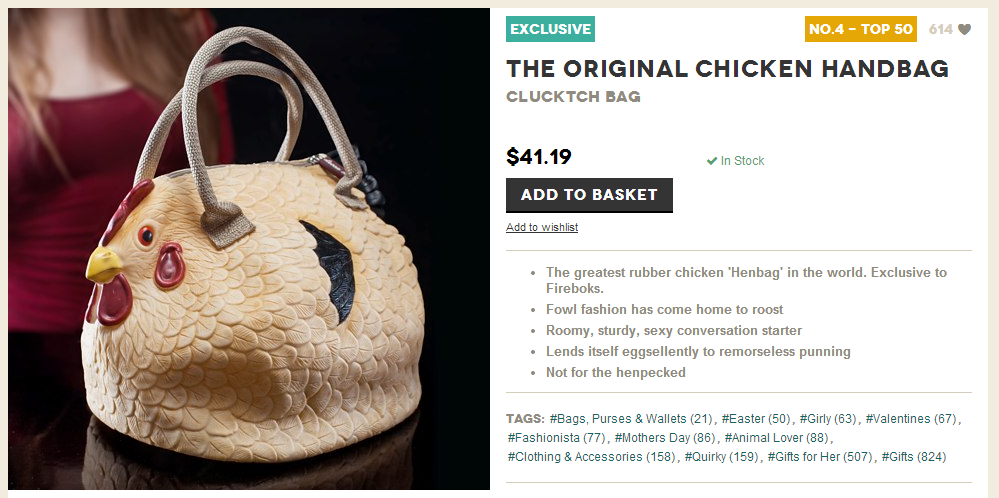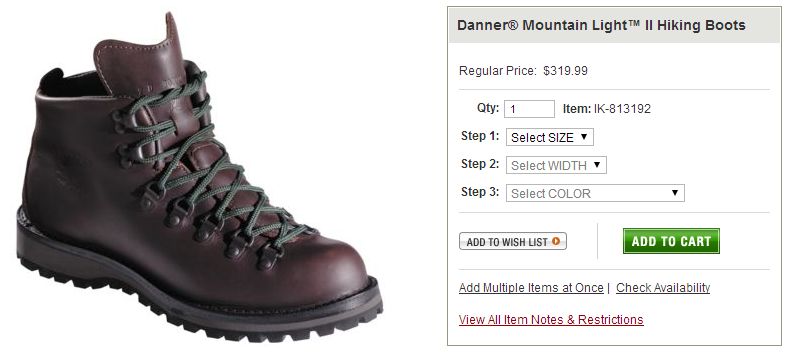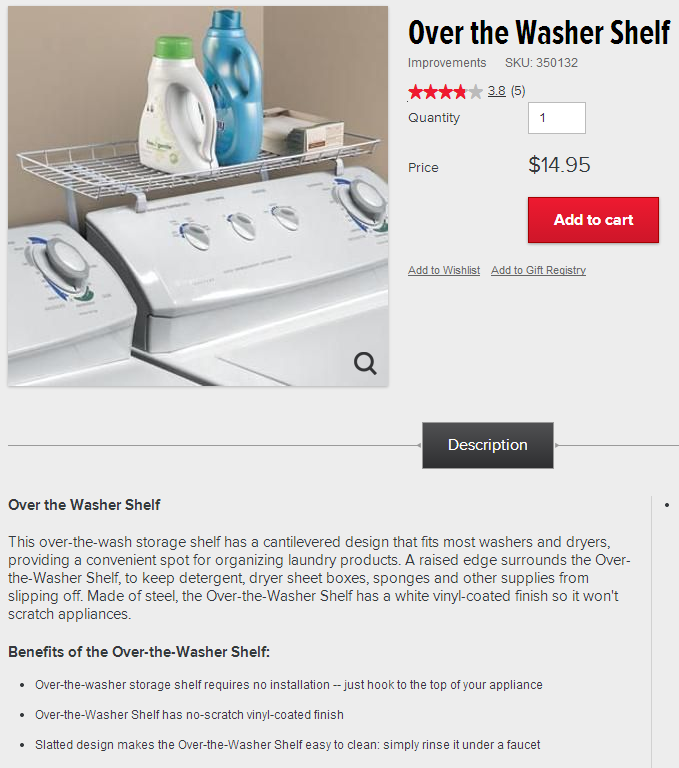How Changing Your Mindset Can Dramatically Improve Your Product Descriptions
While the eCommerce industry continues to evolve and expand, one of its elements remains stuck in the past – product descriptions. As advances in online shopping continue to connect consumers and products in more meaningful ways, very little is changing in the way copy is presented around those products.
That isn’t to say all brands are missing the mark. Some sites, like Firebox, are taking risks with their product descriptions (and products!) and using their copy as a chance to connect with their target audience by talking to them the way they want to be talked to.

But it is safe to say that too many brands and writers aren’t on the same page as the reader when it comes to web copy. There needs to be a shift toward more consumer-focused product copy, and that starts with one thing – a shift in mindset.
Writers need to stop thinking about product descriptions as web copy and start thinking about it as catalog copy.
What’s the difference?
Web copy is written for the web, search engines and optimization.
Catalog copy is written for the reader, the consumer and the potential buyer.
When writers create product descriptions as web copy, they think about writing copy for search engines, and not readers.
When writers create product descriptions for catalogs, they think about writing for the reader only, because there is no place for search engines or optimization.
This little shift in mindset can pull writers back to what really matters in great sales copy – connecting with the reader and informing them about the benefits of a product’s features to generate a sale.
Here are a few tips to help shift your mindset from web copy to catalog copy.
Focus on the Right Tone
Speak to the audience. Before you can speak to the audience, you must identify the audience. Create a potential buyer in your mind. Identify the persona’s age, sex and interests; then write to them.
Cabella’s is an outfitter store with a target demographic of rugged men who like to spend time hunting, fishing and camping. So that’s how they talk to them. “No frills, here – just comfort, traction and legendary Danner reliability.”

Sound like the brand. Before you can sound like the brand, you need to identify who the brand is. To find the brand voice, ask the client, “If you could have any spokesperson for your brand, who would it be?”
The answer to that question will help you get an idea of the tone and personality of the brand. You should also ask the client for an example of copy that represents the brand voice, but the mental image of the spokesperson will help you create a persona for the brand similar to the way you created a persona for the audience. This will make it easier to sound like them.
For example, if you were writing product descriptions for Dior’s perfume lines, imagine the sultry, beautiful Charlize Theron describing the product. Use her voice as the brand voice.

It would appropriately sound something like this description found on their product page, “Luxuriant and sophisticated, J’adore L’absolu sublimely enhances the intensity and sensuality of its floral notes in a perfume in which floral absolutes are harmoniously combined: sweet and vibrant Damask rose, seductive and luminous Sambac jasmine, and powerful, voluptuous Indian tuberose.”
Focus on the Features and Benefits
Once you have a potential buyer in your mind, look at the product and consider why the buyer would want it. Identify the features and benefits by asking yourself questions about the product.
- What problem does the item solve?
- How is it different from competitors’ items?
- What is the number one reason the buyer needs this product?
- When would this product benefit the buyer?
- What is unique about this product?
Make sure that you tie the product’s features (its unique attributes) to its benefits (why those unique attributes are beneficial). Connect the dots between the potential buyer and the features, by explaining how they benefit them.
See how SkyMall (which is more well-known for their print catalogs) connects the features of an Over the Washer Shelf to benefits while speaking to person responsible for caring for the household.

“A raised edge surrounds the Over-the-Washer Shelf, to keep detergent, dryer sheet boxes, sponges and other supplies from slipping off. Made of steel, the Over-the-Washer Shelf has a white vinyl-coated finish so it won’t scratch appliances.”
Focus on Writing Well
Be positive but not personal. Always cast the product in a positive light without interjecting personal opinions or assumptions about the product.
Don’t sound like a robot. Avoid generic phrases. Incorporate varied sentence structure, and don’t repeatedly start sentences with the same word.
Use a thesaurus. Adding variety also means using a large vocabulary. Don’t be embarrassed to crack open a dictionary and find new ways to say the same thing.
But don’t overly adjective. Shopify says “Adjectives help us to explain what our products look like (appearance), what they do (features), and how they make our buyers feel (benefits). In moderation adjectives are useful, but an overdose gives your reader a headache, because it makes your content hard to read.” To avoid adjective overload they suggest to:
- only use one adjective per noun
- don’t use adjectives to state the obvious
- play with sensory/emotion words over bland, overused words
Use the second person. Speak directly to the reader. Tell them why the product is awesome and why they need it. Then use a call to action to tell them how to get it.
Focus on the Reader First, Then Keywords Last
Keywords are still important but consider them after the reader.
Always use the main keyword (that the audience would use to search for the item) once in the description. A main keyword is usually the brand and type of product. Then if it fits naturally, use a secondary keyword (a term that is synonymous with the main keyword) once.
Remember the reader comes first. Use your words to engage the reader, not the search engines.
The J. Peterman Company is most well-known for using eccentric stories and anecdotes to describe their products. This concept was created long before online copy – back when catalogs dominated the product sales industry. Take a tip from their book and find ways to uniquely connect your audience with your products.

Shift your mindset from web copy to catalog copy and start finding new ways to engage your audience, connect with potential buyers and generate sales.
About the Author
Raubi Marie Perilli writes guides about blogging, copy writing, and freelancing for CopyPress Community – an online network of writers, designers, and marketers. Follow her on Twitter to hear more about what she eats, where she goes, and what she knows.
Write higher-converting web copy by taking Heather’s SEO Copywriting Certification training. Sign up today!

You couldn’t be more right! People need to abandon their old SEO ways and look to what the search engines really want. Good content that people want to read and share. And don’t forget rich snippets for your products to give them a boost in the search engines!
You said it Ryan. I love how J. Peterman does their product descriptions. You can tell they are all in for the readers.
Fantastic. I loved the examples. After reading tons of articles my mind got full of insights when reading yours. Thank you.
Happy you enjoyed it Renata!